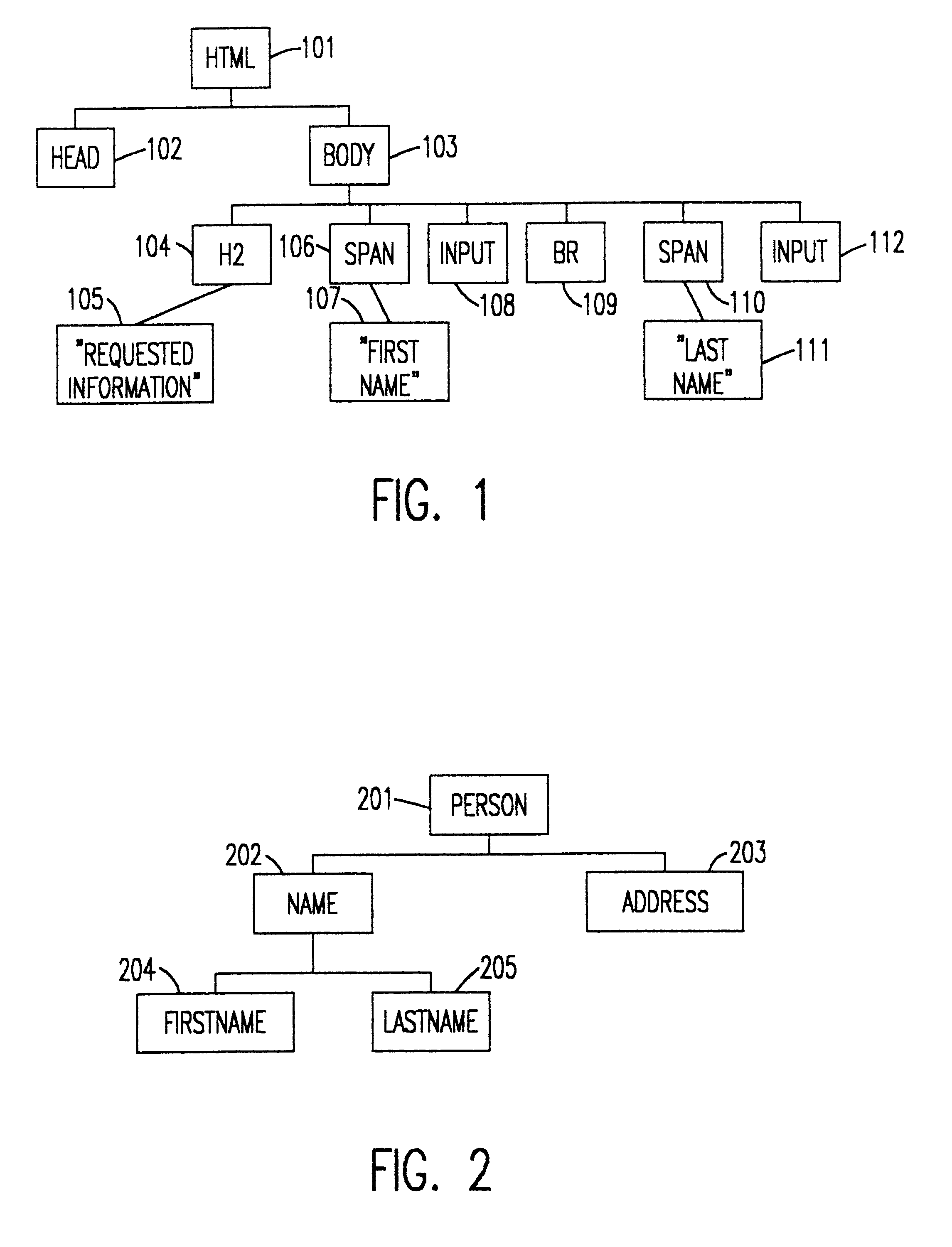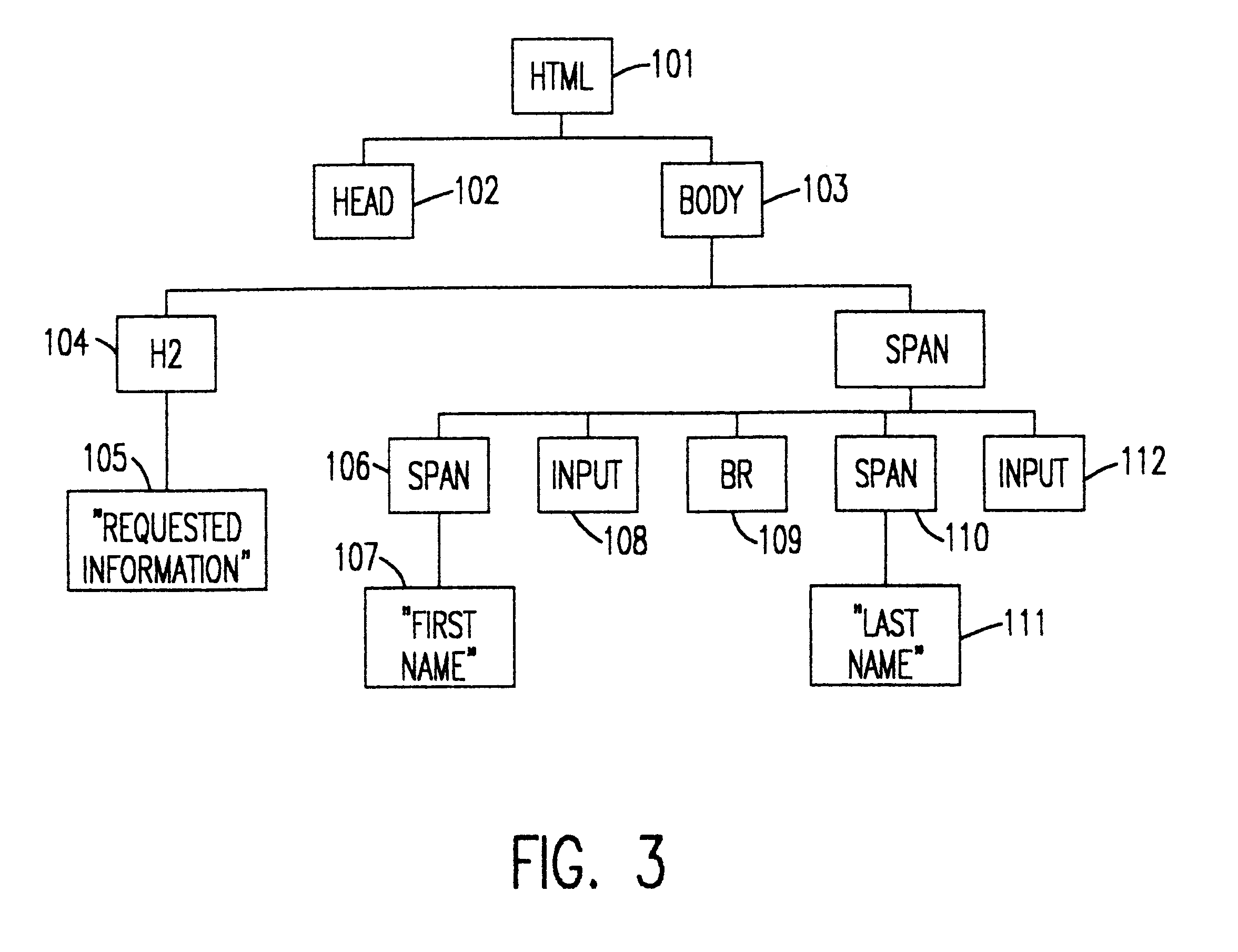Hierarchical view of data binding between display elements that are organized in a hierarchical structure to a data store that is also organized in a hierarchical structure
- Summary
- Abstract
- Description
- Claims
- Application Information
AI Technical Summary
Benefits of technology
Problems solved by technology
Method used
Image
Examples
Embodiment Construction
HyperText Markup Language (HTML) is the basic language for publishing hypertext on the World Wide Web (WWW). HTML is a structured markup language which means that the markup in a file has a particular structure that means something to applications that process it. An HTML browser, such as Internet Explorer v.5, displays the information in an HTML file based on this structure. The World Wide Web Consortium (W3C) has defined a complete set of objects to be used for processing HTML documents as trees. The specification for this set of objects is called the Document Object Model (DOM). In general, an HTML (or XML) document can be thought of as a tree structure, with the "contains" relationship in the document corresponding to a parent-child relationship in the tree.
HTML is not a programming language, per se, but rather a language of tags. Tags are commands to do something, such as where to place images, to structure text into headings, paragraphs, lists, hypertext links, etc., and typic...
PUM
 Login to View More
Login to View More Abstract
Description
Claims
Application Information
 Login to View More
Login to View More - R&D
- Intellectual Property
- Life Sciences
- Materials
- Tech Scout
- Unparalleled Data Quality
- Higher Quality Content
- 60% Fewer Hallucinations
Browse by: Latest US Patents, China's latest patents, Technical Efficacy Thesaurus, Application Domain, Technology Topic, Popular Technical Reports.
© 2025 PatSnap. All rights reserved.Legal|Privacy policy|Modern Slavery Act Transparency Statement|Sitemap|About US| Contact US: help@patsnap.com



